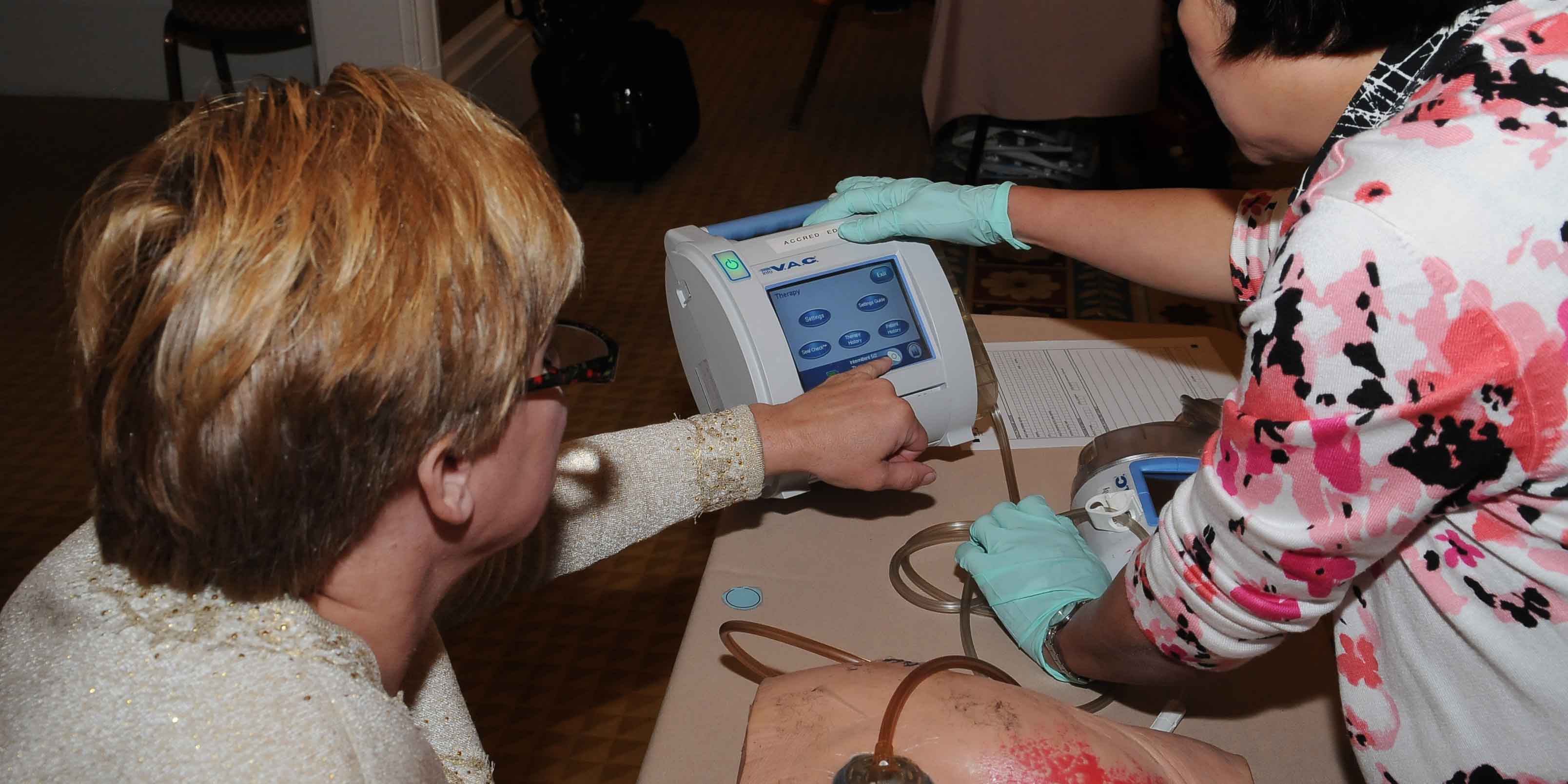When treating patients with negative pressure wound therapy systems, the effective use of photographs can play an important part in providing optimum care.
“The reason photos are so integral is there are more wound patients than there are wound care clinicians,” said Beth Hawkins-Bradley, MN, RN, CWN, principal clinical educator in medical affairs at Cardinal Health in Dublin, Ohio. “For many patients, the reality is they may have a nurse assigned to manage their wound via a negative pressure wound therapy system who is not a wound care expert.”
One example of how resources can be valuable for negative pressure wound therapy system users is V.A.C. Therapy.
It’s a multi-step process that can be hard to describe in words, but is much simpler to visually demonstrate with photos, said Ron Silverman, MD, FACS, chief medical officer at KCI, an Acelity Company based in San Antonio.
“Images are enormously valuable, and they can even be considered indispensable when learning to properly use V.A.C. Therapy,” he said.
“For example, it can be difficult to explain how to place the foam inside the wound — not partially on the wound — or how exactly to place the drape on the skin around it, connect the tubing and other steps in the process,” he continued.
Use company websites for photos, videos
Clinicians using V.A.C. Therapy can access a company-provided online guide with photographs and detailed instructions, Silverman said.
“It’s much easier to learn the proper procedures by following the simple process outlined in the V.A.C. Therapy Clinical Guidelines available on Acelity.com,” he said.
Not only are photographs a way to document a wound’s progress, but they also can be used to document all steps of applying dressings and the entire negative pressure wound therapy system to a wound.
“Each step of the process of applying the negative pressure wound therapy system can be photographed for continuity of care so the next nurse understands the correct application of the system,” Hawkins-Bradley said.
Sometimes patients take their own wound photos while their clinician is applying the negative pressure wound therapy system.
“Some patients like having their own photos so they can troubleshoot if problems arise,” Hawkins-Bradley said. “They also like to have photos for their nurses in the event they are new and need them for reference.”
Document negative pressure wound therapy
According to Hawkins-Bradley, documenting all steps in the process is key to ensure clinicians:
- Understand how the system is applied
- Comprehend how it’s used
- Can determine pressure setting for each patient
Cardinal Health has numerous educational resources regarding the use of negative pressure wound therapy systems for clinicians on its website, as well as instructional videos.
“I recommend these links for clinicians and patients,” Hawkins-Bradley said. “These are great tools for viewing products, learning how to troubleshoot and finding user manuals that include step-by-step instructions with photos of devices, along with specific component of devices.”
Silverman pointed out as with any medical device, administering V.A.C. Therapy also requires certain safety precautions and considerations that can be better demonstrated visually.
“If a wound has a blood vessel at the base, you should apply a non-adherent dressing on the blood vessel to avoid sticking during dressing changes that could lead to bleeding,” he said. “This can be easily explained using visual aids.”
In demonstrating proper V.A.C. Therapy use, Silverman cited the old adage that a picture is worth a thousand words.
“This is certainly true, but I’ll take it one step further and add that a video can be worth a thousand pictures,” he said. “We’ve created a number of videos available on Acelity YouTube channel that explain how the products work and how to properly apply V.A.C. Therapy, step by step.”
Hawkins-Bradley said video resources also are available regarding the use of negative pressure wound therapy on the Cardinal Health YouTube channel.
Take your own photos for in-house use
There are times when wound care clinicians decide to take their own photos of patients’ wounds and negative pressure wound therapy systems.
This may be in addition to using outside resources provided by corporate websites and online instructional videos.
When that’s the case, there are several things clinicians can do to enhance the images they take, document a case and share information with others, according to Silverman.
Silverman offers 12 tips for effective photos and documentation while also considering patient privacy.
- Get patient consent first and work to keep the patient’s identity confidential.
- Avoid taking photos of identifiable markings when possible, such as birthmarks or tattoos, as well as unnecessary visibility of the face.
- Be respectful of showing genitalia if not pertinent to the case.
- Crop or blur identifiable characteristics out of the image when necessary, and avoid them altogether when possible.
- Zoom out enough so viewers can easily understand the location of the wound on the body.
- Include a ruler in the field of the picture so the viewer can have a frame of reference for the wound’s size and scale.
- Use the best lighting possible, including the flash when necessary.
- When taking multiple pictures of the same wound over time to demonstrate progression, try to take it from the same distance so the images are comparable. Keep the ruler in the same or similar position as a reference point.
- Clean up the area around the wound before taking the photograph so blood drippings or tools aren’t distracting for viewers.
- Use a solid, dark background around the wound. White backgrounds reflect the flash. Clean, blue surgical towels work well.
- When sharing your photos with others, give relevant historical information, such as the diagnosis, how long the wound has been there, what treatments have been used to date and/or if the wound has gotten better or worse.
- For teaching purposes, take images at each of the various steps in the process.
Become a wound care expert with our Certified Wound Care Market Specialist Course.
What do you think?

